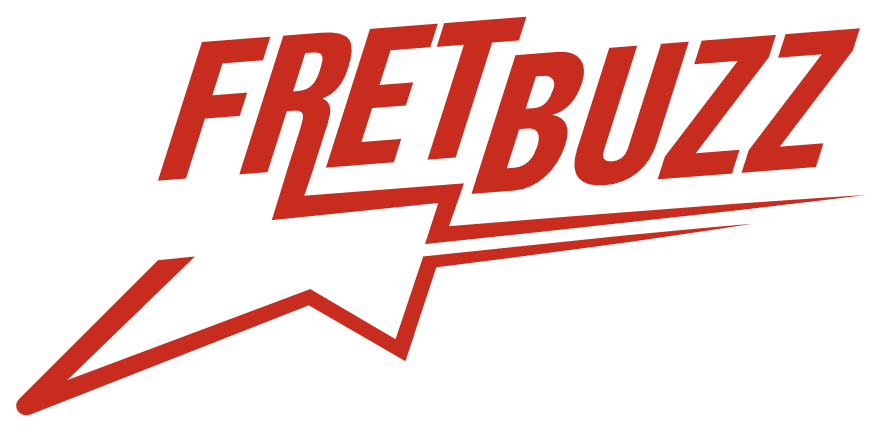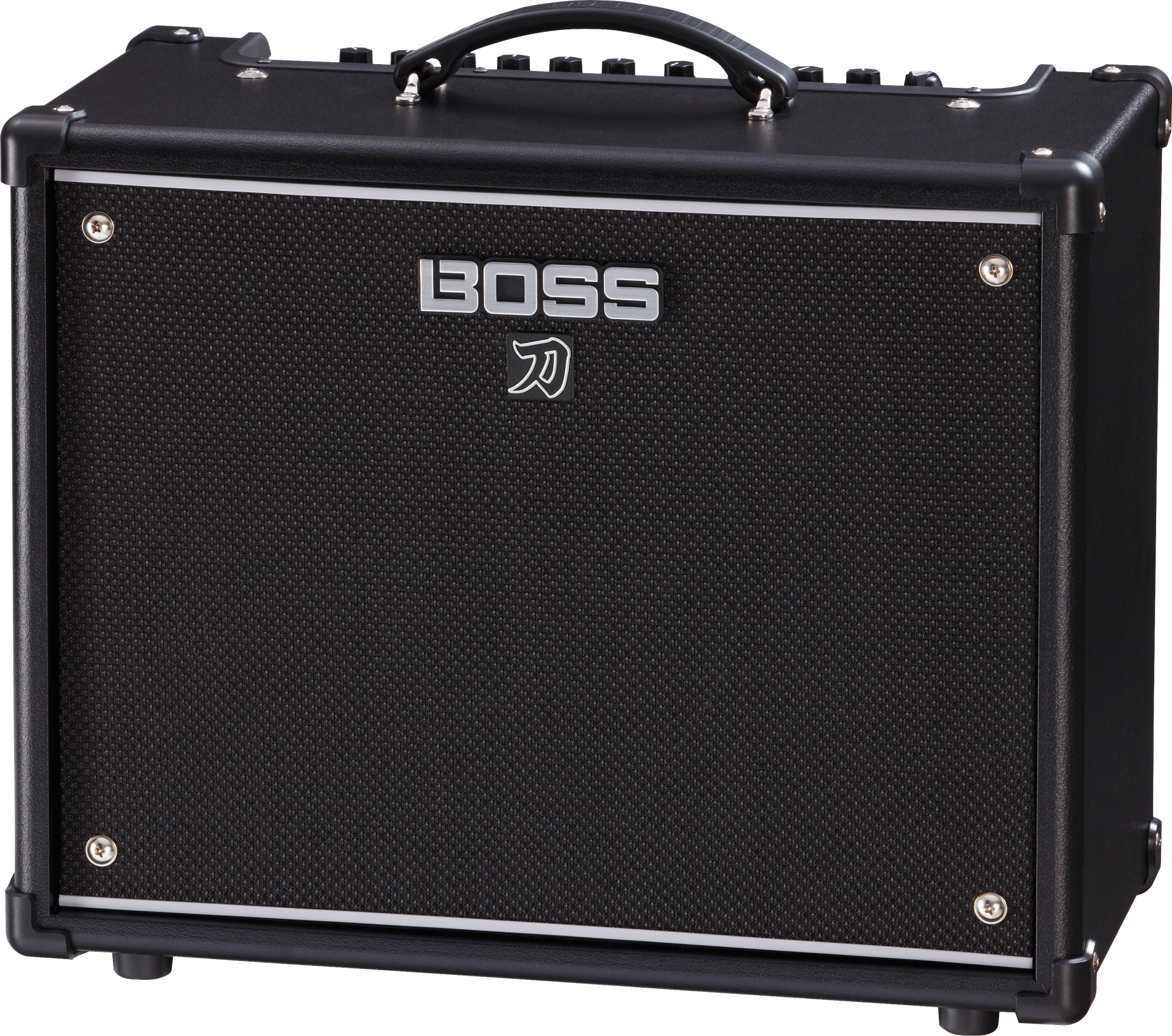by Jon Wiederhorn
“Takes all the features that were great about the MKII and makes them even better.”
There’s a reason the Boss Katana series has been one of the most popular lines of amps for more than seven years. Integrating superior circuitry developed over decades of research and a new level of sound modulation, evolved amp modeling tones, more options than their competitors, and an affordable price point, the Katana dominated the practice amp space. Not just that. While it was a great, user-friendly, easily portable amp for beginners, it also earned spots in the hearts and playing spaces of intermediate and professional guitarists. The now somewhat primitive Boss Katana-50 watt introductory model — compared to the new Gen 3 – still sounds great whether played at a low volume or cranked to maximum threshold. For a 50 watt amp, it was loud enough to compete with drum kits and could hold its own unmiked at parties or small club gigs.
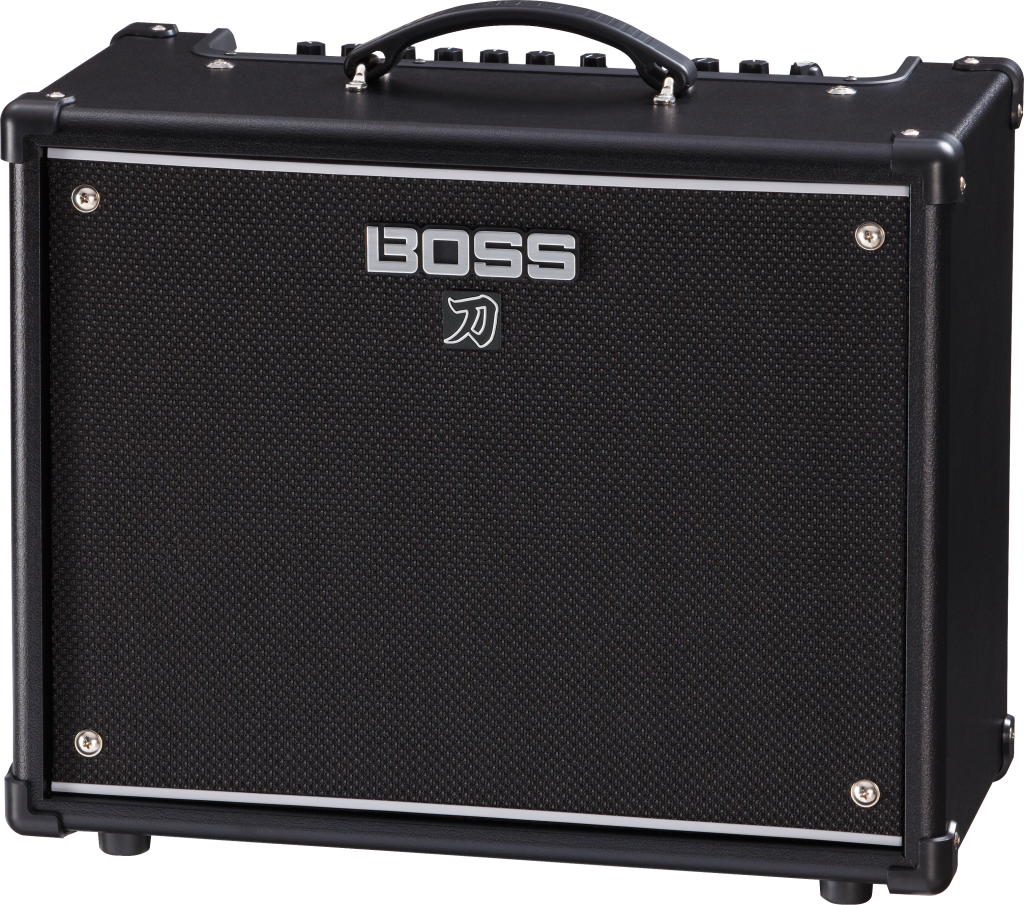
Minor modifications came three years later when Boss issued the Katana MkII. The amp featured the same five basic settings – acoustic, clean, crunch, lead, and brown – but each channel offered two tones, one more immersive than the other. In addition, Boss expanded the amp’s onboard effects categories from three to five: Booster, Mod, FX, Delay, and Reverb. And, most significantly Boss provided a Tone Studio feature, which allowed players to use their cell phones to fine-tune, customize, and save their amp tones using a downloadable app. Those who took advantage of the Tone Studio discovered a library of more than 60 Boss effects, and users could store their presets in the company’s cloud, allowing other users to take advantage of the tones, many of which were modeled after the sounds of specific bands and songs.
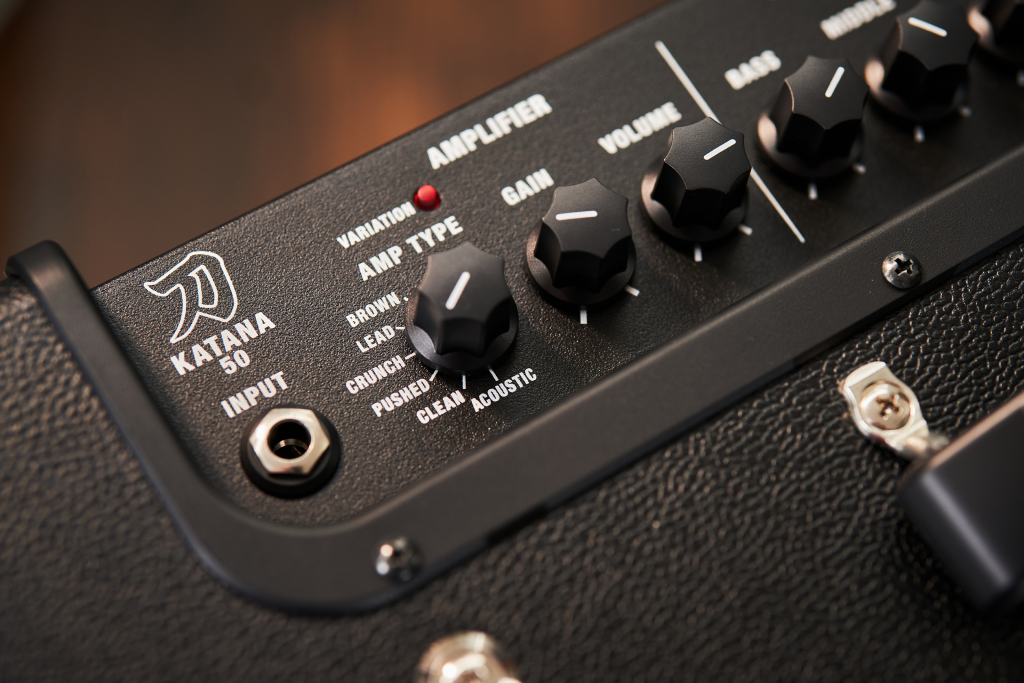
So, how does a sound technology giant up the bar on an already excellent product so much that – while it doesn’t exactly render the MkII obsolete – it motivates players to plunk down another $300 for the latest model, the Gen 3? Simple, it takes all the features that were great about the MKII and makes them even better. The Gen 3 sounds richer and more resonant right out of the box. Whether it’s the new twelve-inch speaker itself or the patented “Tube Logic” technology, the Gen 3 comes even closer to the sounds of a tube amplifier than its predecessor, and, unlike many tube amp modelers, it doesn’t cause unpleasant ear fatigue, even after prolonged playing. Beyond that, the Gen 3 has more features than the MKII. To start with, there’s a new channel, “Pushed,” to accompany the tried and true Acoustic, Clean, Crunch, Lead, and Brown settings. The Pushed setting sits between Clean and Crunch, and offers a healthy overdriven sound that only borders on distortion when the gain is significantly turned up. With the turn of a knob, it offers a hint of dirt that blues, country, and soft rock players often seek from overdrive pedals.
More significantly, players can access the Tone Studio and its vast library of programmed and user-generated sound profiles through Bluetooth by purchasing the Audi MIKI Dual Adaptor for about $60. When plugged directly into the back of the amp, players can customize their sound parameters from more than 60 types of effects – many using the circuitry of established Boss pedals. There’s a bit of a learning curve to figure out all the bells and whistles of the BTS Editor App, but once you’ve got it down, it’s an amazing tool that enables you to wirelessly access a practically limitless range of tones — from ambient to extreme — suitable for a wide range of music styles including new age, blues, jazz, rockabilly, classic rock, metal, punk, alternative, shoegaze, avant-garde, psychedelic, and space-rock. From the Tone Studio it’s easy to save and store their favorite settings. Players can also connect to the Tone Studio with an OTG type-C USB cable, as with the MKII, but the Gen 3 Bluetooth adapter is far easier to use.
There are a few more features that make the Gen 3 stand out. The unit can be used as a monitor for an external setup (such as a direct-to-PA pedalboard) by plugging into the Power Amp In jack in the back. This bypasses the Katana preamp, allowing players to tap into the reactive Class AB power section of the Gen 3 to amplify an amp modeler or external preamp. Another cool feature is a stereo jack for plug-in headphones, which works great with stereo pedals that you’ve never heard at their finest if you only played through a mono jack. And, the power-packed Gen 3 has a 3.5 mm aux-in jack that’s perfect for jamming along with streaming music or MP3s. Finally, the USB-C output can be used to record directly to a smartphone or DAW.
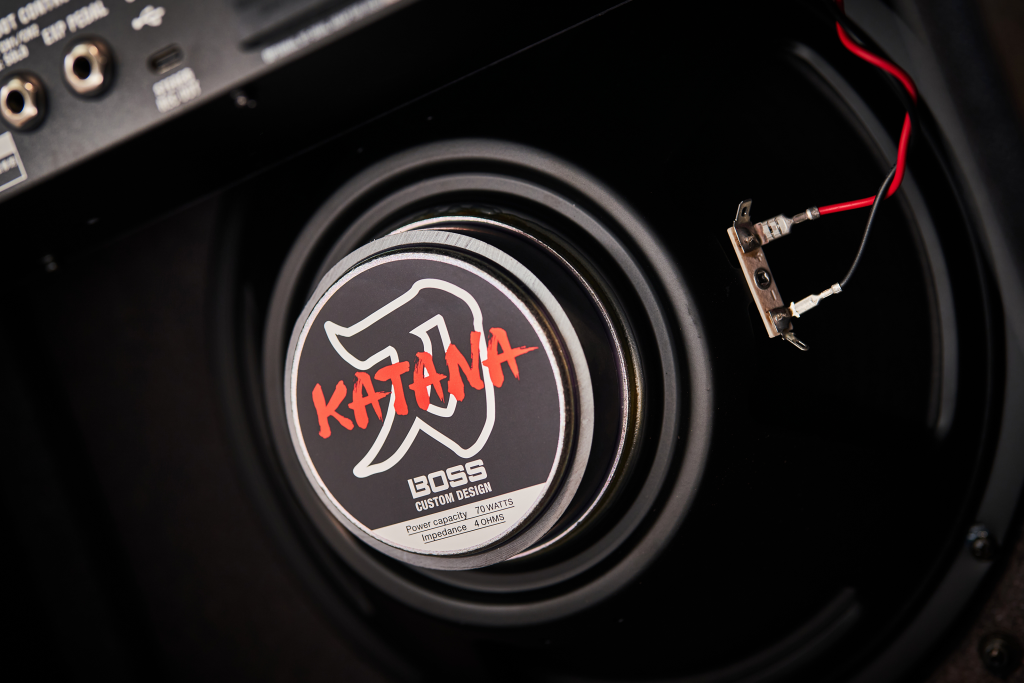
We tested Gen 3 with a variety of beginner, intermediate, and professional guitars equipped with multiple types of pickups and the Gen 3 brought out the best in all of them. It worked equally well with guitar pedals, ranging from $25 to $300. For players looking for a fully loaded practice amp with a sound that’s about as close as you can get to emulating a fully firing tube amp, the Boss Gen 3 is an excellent choice. Keep in mind that tube amps sound best when they’re cranked and aren’t nearly as powerful on low volumes. The Gen 3, by contrast, sounds just as killer at the .5 watt practice room setting as it does at maximum blast power. For all kinds of players, the Gen 3 is like a high-quality speaker that’s equally capable of delivering peaceful and terrifying tones, depending on the preference of the user. As will all good amps, the Gen 3 can offer a clear sound with solid separation that’s less forgiving of playing mistakes than lower fidelity gear. So, if you plug in and you don’t immediately sound as good as your favorite guitarist, it’s because you’re not your favorite guitarist. But one of the best ways to improve is to pay attention to the imperfections and strive for improvement.
The only possible hurdle for Boss and the Gen 3 is the quality standard they’ve already set with the Katana series. The Katana was a really good amp, the Katana MkII was a better amp. So, for customers who are happy with either, forking out another $300 if you don’t need the extra features might not be worthwhile. We find the Gen 3 incredibly fun to play even without using the Tone Studio, and the Bluetooth feature makes the Tone Studio far easier to navigate.
So here’s our take: If you’d love to tap into all of the sound profiles the Gen 3 has to offer (including the user-created tones and 60-plus Boss effects), and you’ve had a hard time doing so on the MKII, we strongly recommend taking your Katana journey to the next level.
